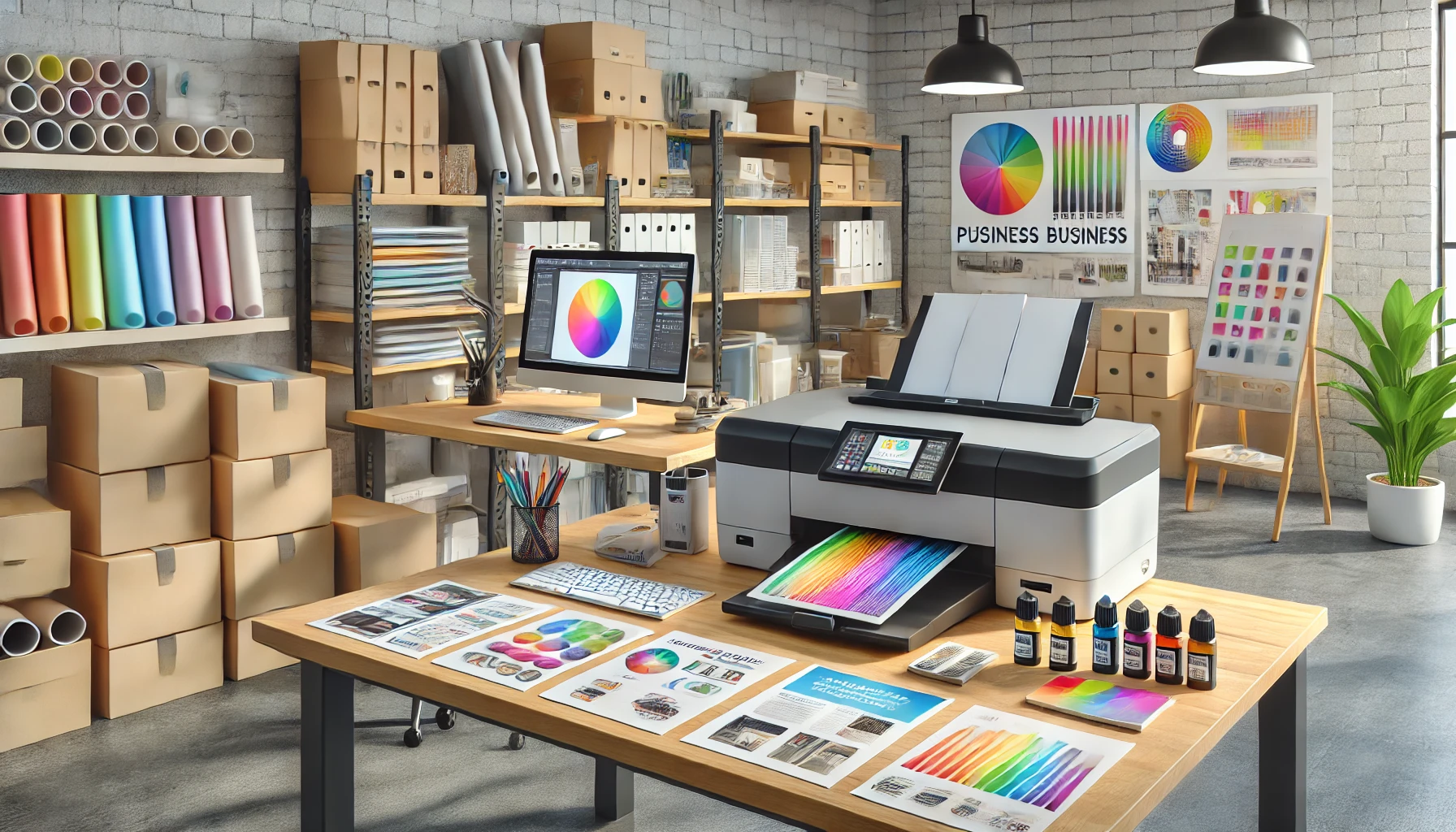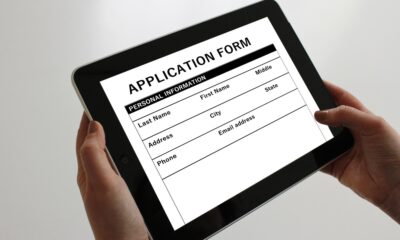MORE
Start a Small Printing Business: Step-by-Step Guide

Thinking of launching your own business but not sure where to begin? If you enjoy working with design, branding, or personalized products, a printing business could be your perfect match. The demand for print is still strong—think business cards, wedding invitations, flyers, banners, and branded merchandise.
The good news? You don’t need to start big or break the bank. With the right tools, planning, and a dash of creativity, you can start a small printing business from home or a compact commercial space.
This guide will walk you through every step—from planning and setup to growth and success. Whether you want to print t-shirts, posters, or packaging materials, we’ll help you turn your idea into a real, revenue-generating operation.
Why Start a Small Printing Business?
Starting a small print shop offers several advantages for new entrepreneurs:
-
Low startup costs compared to other industries
-
Wide range of niche markets to explore
-
Scalable operations—grow at your own pace
-
Steady demand for promotional and event materials
-
Work-from-home flexibility or easy local setup
It’s ideal for creative minds who want to work with both digital tools and tangible products.
Step 1: Define Your Niche and Services
Before buying any equipment, decide what type of printing services you want to offer. Some options include:
-
Business printing: Flyers, brochures, business cards, letterheads
-
Personal event printing: Invitations, banners, thank-you cards
-
Custom merchandise: T-shirts, mugs, tote bags
-
Packaging materials: Stickers, labels, custom boxes
-
Large format printing: Posters, signs, vinyl decals
By focusing on a specific niche early on, you can tailor your marketing and services to meet customer needs more efficiently.
Step 2: Write a Business Plan
No matter how small the operation, a business plan is crucial. It helps you map out:
-
Startup and ongoing costs
-
Target audience
-
Competitor analysis
-
Pricing strategy
-
Marketing channels
-
Revenue goals
This document will guide your decisions and also help if you ever seek funding or partnerships.
Step 3: Register Your Business and Choose a Name
A great business name is memorable and hints at what you do. Once chosen:
-
Register your business with your local government
-
Obtain any required permits or licenses
-
Apply for an EIN (if in the U.S.) for tax and hiring purposes
Also, check domain availability for your business website early on.
Step 4: Set Up Your Workspace
Your workspace doesn’t need to be huge—but it should be organized and efficient. Choose between:
-
Home office or garage: Ideal for small-scale or startup operations
-
Retail storefront: If you plan to serve walk-in customers
-
Shared workspace: Cost-effective option for new business owners
Make room for your printer, computer, paper stock, packaging materials, and samples.
Step 5: Choose the Right Equipment
Your equipment depends heavily on what you’re printing. Common options include:
-
Laser or inkjet printers: For paper-based materials
-
Sublimation printers: For printing on mugs, t-shirts, and fabrics
-
Vinyl cutters and plotters: Great for signage and decals
-
Heat press: Needed for apparel and fabric transfers
-
Laminators and binding machines: Useful for high-end documents and books
Also, invest in design software like Adobe Illustrator, Canva Pro, or CorelDRAW.
Step 6: Source High-Quality Materials
Customers will judge your business on the quality of your output. Use:
-
Premium paper stock
-
Eco-friendly inks
-
Durable packaging
-
Custom templates
Build relationships with trusted suppliers and compare prices to keep your costs manageable.
Step 7: Create a Portfolio and Samples
A strong portfolio is essential when you’re just starting. Here’s what you should do:
-
Print sample work like mock business cards, flyers, or stickers
-
Create product photos for your website and social media
-
Offer free samples to friends or local businesses for exposure
-
Display customer testimonials as you grow
Let your portfolio speak for your quality, even before big jobs come in.
Step 8: Build an Online Presence
In today’s digital world, a strong web presence can make or break your business. Make sure you have:
-
A professional website with services, pricing, and a contact form
-
E-commerce functionality if you sell directly (use Shopify, Etsy, or WooCommerce)
-
Social media accounts—Instagram and Facebook work great for visual products
-
Google My Business profile to show up in local searches
Use consistent branding across all platforms for better recognition.
Step 9: Market Your Printing Business
Getting your first few customers is often the hardest part. Try these strategies:
-
Local partnerships with coffee shops, salons, realtors, or schools
-
Flyer distribution (print your own!)
-
Email newsletters for ongoing promotions
-
Referral incentives to encourage word of mouth
-
Social media ads targeting small business owners or event planners
Be patient but persistent—your brand will grow with consistent effort.
Step 10: Price Your Services Profitably
You’ll want to be competitive but still make a profit. Consider:
-
Cost of materials + labor
-
Time spent designing
-
Shipping or delivery
-
Your desired profit margin
Use tools like Excel or QuickBooks to track your profits per order.
Common Mistakes to Avoid
Avoiding early missteps saves you time and money. Steer clear of:
-
Buying too much equipment before validating demand
-
Undervaluing your work to attract customers
-
Ignoring customer feedback
-
Not maintaining backup files or print settings
-
Failing to account for shipping or tax costs
Treat your business like a business—even when it’s still small.
Also read: Used Toyota Sienna: A Reliable Family Minivan
Conclusion
Launching your own business can be both exciting and intimidating, but when you start a small printing business, you’re entering a world of creative expression, problem-solving, and genuine impact. From helping a bride design her dream invitations to supporting local startups with branding materials, you’re doing more than printing—you’re building relationships and empowering ideas.
Take the time to research, plan, and grow gradually. With passion and persistence, your small print shop can flourish into a reliable source of income—and creative joy.
FAQs
What equipment do I need to start a small printing business?
At minimum, you’ll need a quality printer, design software, and paper or material stock based on your niche. You may also need tools like a heat press or vinyl cutter.
Can I run a printing business from home?
Yes! Many successful print shops begin as home-based businesses, especially when focusing on paper goods or online orders.
How much does it cost to start a printing business?
Startup costs can range from $2,000 to $10,000, depending on the type of printing and equipment you need.
Do I need graphic design skills?
While not required, basic design skills are extremely helpful. Tools like Canva or Adobe Illustrator can assist even beginners.
How do I find clients for my printing business?
Use a combination of local outreach, online marketing, and referrals. Partner with local businesses and showcase your work on social media.

-

 EDUCATION3 months ago
EDUCATION3 months agoFree Cover Letter Generator: Build Job-Winning Letters in Minutes
-

 GUIDE3 months ago
GUIDE3 months agoBenefits of Online Personal Training for Fitness Success
-

 BUSINESS2 months ago
BUSINESS2 months agoGrow Your Audience with USA Instagram Followers
-

 TECH2 months ago
TECH2 months agoFreedom Forever Solar Reviews Explain How Conversational Intelligence Turns Customer Interactions into Insights